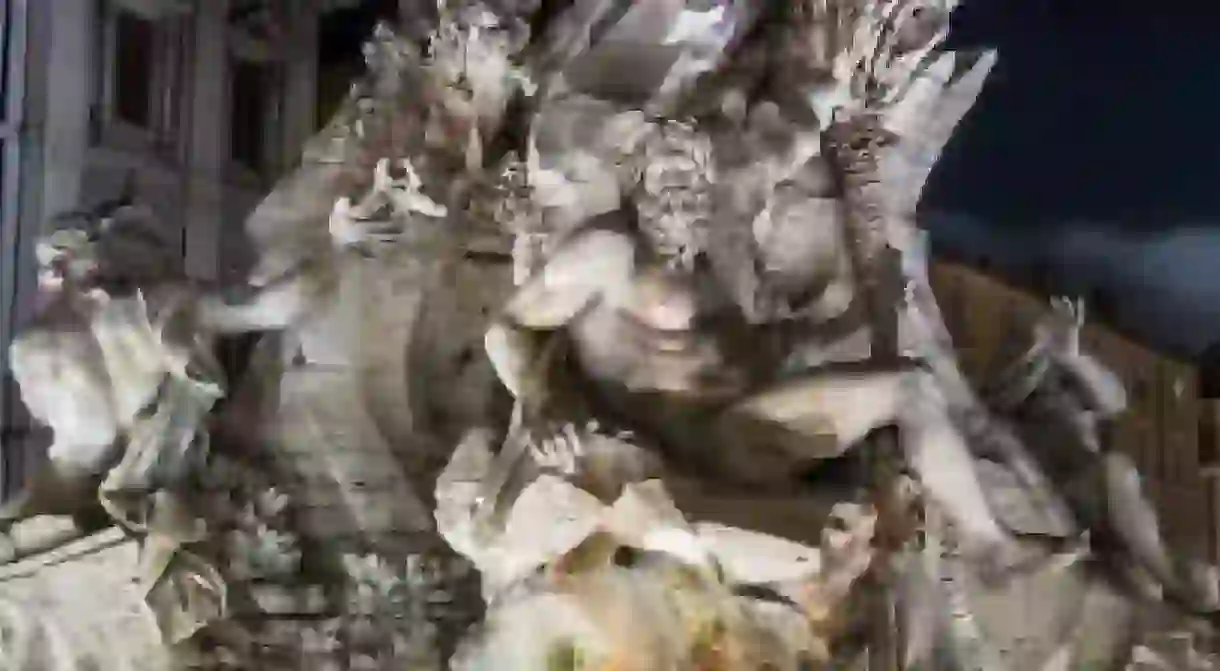The Top 5 Things To Do And See in Rome's Ponte, Parione & Regola

Ponte, Parione & Regola are three of the central districts in Rome. They are located on the southern bank of the Tiber and can offer several cultural stop-overs to those who want to live the most authentic Roman life. Here is a selection of 5 things every tourist should visit in these areas.

Piazza Navona
Historical Landmark, Market

Just like most Italian piazzas, Piazza Navona is often regarded as a meeting place by locals and tourists alike. Besides offering a vast array of restaurants and bars where people can sit back and relax, this square also boasts the wonderful Baroque church of Sant’Agnese in Agone, as well as the renowned Fountain of the Four Rivers. Welcoming its visitors through the gate gaping open between two symmetrical bell towers, the church will not disappoint any tourist and will have all wondering at the frescoed ceiling with eyes wide open. The fountain meanwhile, designed by Bernini in 1651, represents four rivers which in turn stand for the four continents: the Nile and Africa; the Danube and Europe; the Ganges and Asia; the Río de Plata and the Americas. Over Christmas, Piazza Navona hosts a picturesque market with several varieties of food and local produce.
Campo de’ Fiori
Market
In the dark ages of the past, Italian piazzas were also the places where executions took place, and Campo de’ Fiori bore witness to one of the most dreadful of these, that of Giordano Bruno, an influential philosopher, mathematician, and astronomer who was burnt alive there in 1600. Today a statue stands in the exact spot where this bloody event took place as a reminder of the cruelty of which mankind has been capable. Life carries on in daylight as well as at night, through the market stalls offering fruit and vegetables in the morning and through the bars and restaurants which welcome their patrons whole-heartedly in the evening. Piazza Campo de’ Fiori, Rome, Italy
Museo di Roma
Building, Museum
The Museum of Rome is located in a wonderful 18th-century palace, Palazzo Braschi, situated in the Renaissance heart of town. With a convoluted history of dismantling, reconstruction, and repair, this building is far from being completely renovated – in fact, there are still people working on the upper floors whilst the site is open to visitors in the lower ones. If visitors are interested in finding out a bit more about local history, this building and the exhibitions it offers are the perfect choice. Piazza di S. Pantaleo, 10, Roma, Italy,+39 06 0608
Chiesa di Santa Maria in Vallicella
With a jaw-droppingly beautiful façade made of travertine, this church is a one-off even in a city like Rome, which abounds with religious sites and enchanting buildings. Santa Maria in Vallicella was much smaller in size at the beginning of the 16th century, but it was elaborated and extended through a series of works in the same century, until it was finally consecrated and opened as it now stands in 1599. The name comes from that of a painting, ‘Madonna della Vallicella’, dating back to the 14th century, which was hit by a rock in 1535 and allegedly started bleeding. This same painting was successively restored and is now displayed on the main altar of Santa Maria in Vallicella. Via del Governo Vecchio, 134, Roma, Italy, +39 06 687 5289
Lungotevere
“Lungotevere” is the Italian for “Tiber Waterfront”, and refers to any path or route running along the river Tiber. Whatever part of the city tourists are in, Rome always merits a glance from the banks of its river – even more so if they find themselves in Ponte, Parione or Regola, which are ‘rioni’ (i.e. ‘districts’) that border this famed stream of water. In the expanse of the Tiber which touches this area, there are seven different stretches which allow for seven different walks, which tourists can enjoy while soaking up the Roman sun.














